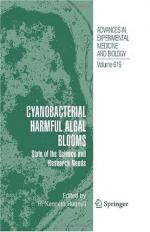|
This section contains 522 words (approx. 2 pages at 300 words per page) |

|
Algae are simple, single-celled, filamentous aquatic plants; they grow in colonies and are commonly found floating in ponds, lakes, and oceans. Populations of algae fluctuate with the availability of nutrients, and a sudden increase in nutrients often results in a profusion of algae known as algal bloom.
The growth of a particular algal species can be both sudden and massive. Algal cells can increase to very high densities in the water, often thousands of cells per milliliter, and the water itself can be colored brown, red, or green. Algal blooms occur in freshwater systems and in marine environments, and they usually disappear in a few days to a few weeks. These blooms consume oxygen, increase turbidity, and clog lakes and streams. Some algal species release water-soluble compounds that may be toxic to fish and shellfish, resulting in fish kills and poisoning episodes.
Algal groups are generally...
|
This section contains 522 words (approx. 2 pages at 300 words per page) |

|


